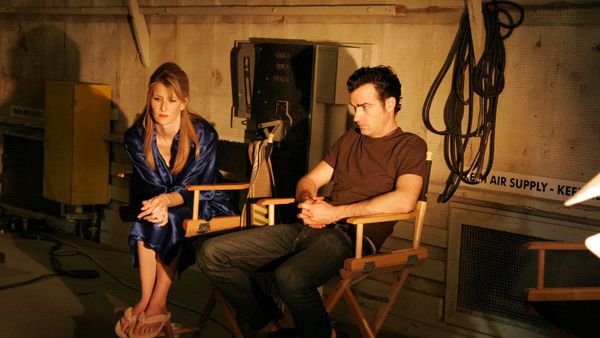Eye For Film >> Movies >> Inland Empire (2006) Film Review
Inland Empire
Reviewed by: Amber Wilkinson

I have a theory. So does the man next to me. Not to mention the guy three rows behind. We talk about it and... what do you know? We might all be right, possibly simultaneously. And that is the joy - and perhaps the despair - of watching a David Lynch film. Also, if we told you our theory, we would, most likely, be forced to kill you... possibly with a screwdriver, as a red curtain falls.
So, while I’ll leave the interpretation up to you, here are the facts of the matter. Or what seem to be the facts at any rate. Firstly, if you’re looking for narrative, better stay at home and pick up a book. I think I heard a whimper from the narrative, briefly, in the first hour of the film but it was hiding in a corner – presumably worried that if it made its presence felt too much, Lynch would hit it over the head with some absurdist rabbits.

Yes, there are rabbits worthy of an Ionesco play, slotted in seemingly at random. One is ironing, the other two sit on the sofa, chatting, while a laugh track plays incongruously behind them. But I digress on Lynch’s digressions. The narrative. Remember that?
It involves Laura Dern, acting her socks off in a career best performance, as Nikki Grace, a starlet given a role in a movie, On High In Blue Tomorrows. She has a strange encounter with a Polish woman, who warns her the film is cursed and is also blessed with a possessive husband, who is (possibly) Polish and sinister.
In the movie, she plays Susan Blue, a mixed up kid in a mixed up relationship. Mixed up is the phrase, as Nikki and Susan’s worlds begin to collide, leading to a possible third incarnation of Dern’s character, who is seriously losing it. Meanwhile, Polish hookers pop up at random and gaggles of girls swing their hips (yeah) to the Locomotion. After that, you might as well ask the rabbits for directions.
While the narrative is away with the bunnies, as a mood piece Lynch scores a slam dunk. He has a way with sound and in-your-face close ups which seems to point out the sinister even in the most mundane of moments. He also takes the prize for the most shocking image of the year so far, as unexpected as it is scary. While grasping the story is as easy as knitting soup, there are plenty of nods to familiar Lynch themes, such as the nature of the Hollywood beast and, of course, women in trouble.
Where the film is less successful, however, apart from in terms of its obese runtime, which could easily have taken a trim, is in the digital video used to shoot it. While Lynch has said he loved the extra freedom the medium gave him, to shoot for 40 minutes at a time if he wanted – just because you can do more of something, doesn’t make it better. Lynch has always had a painterly eye and many of his magnificent images suffer with the graininess of the DV.
By the end of the hints, holes and whores – “You can take the horse to the well” – you’ll have a theory, too, I promise.
Reviewed on: 01 Mar 2007




















